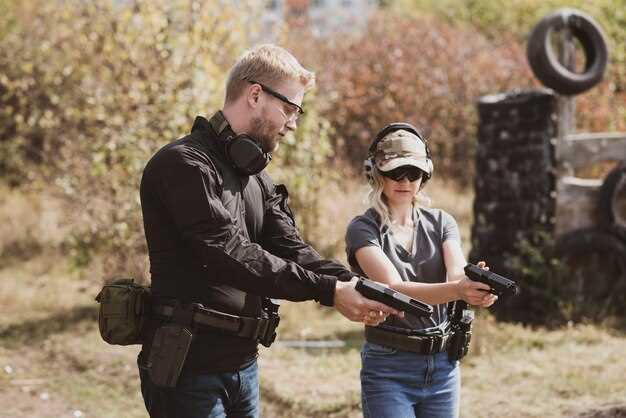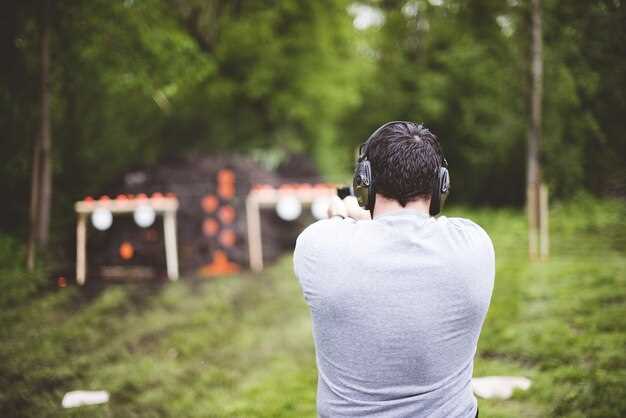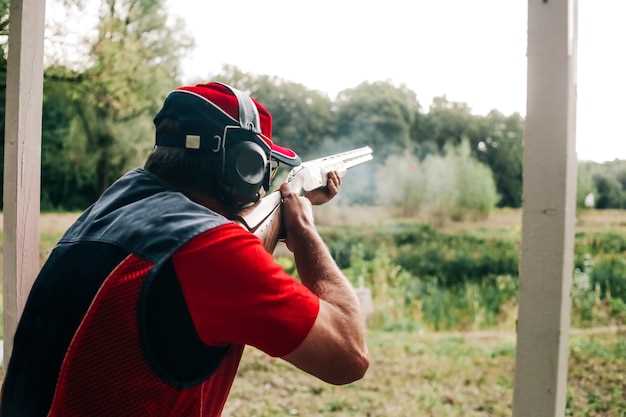
How to participate in long-range shooting matches

Long-range shooting is an exciting and challenging aspect of the shooting sports that requires a combination of precision, technique, and mental fortitude. In this guide, we will explore the essential skills needed to excel in long-range shooting matches, whether you are a beginner seeking to improve or an experienced competitor aiming for the top.
Competing in long-range shooting events is not merely about having the right equipment; it involves a deep understanding of various factors that influence the bullet’s trajectory. Wind, elevation, and humidity play crucial roles, and mastering these variables is key to enhancing your shooting skills. This guide will provide insights into the importance of ballistics, ranging techniques, and environmental considerations that can significantly impact your performance.
Additionally, we will cover practical tips for preparing for competitions, from selecting the right ammunition to building a consistent shooting routine. Developing a strong mental game is equally critical, as staying focused under pressure can make the difference between winning and simply participating. Get ready to elevate your long-range shooting experience with valuable knowledge that will help maximize your potential in matches!
Understanding Ballistics for Long-Range Accuracy

In long-range shooting matches, mastering ballistics is essential for achieving precision and consistency. Ballistics involves the study of the motion of projectiles, taking into account factors such as velocity, trajectory, and environmental conditions. Understanding these elements allows shooters to refine their skills and adapt their techniques for various shooting scenarios.
One of the critical aspects of ballistics is exterior ballistics, which examines the projectile’s flight from the muzzle to the target. Factors such as bullet weight, shape, and velocity play significant roles in determining the trajectory. For instance, heavier bullets generally maintain their velocity better over long distances, which can help reduce wind drift and improve accuracy at extended ranges.
Another essential aspect is understanding the impact of wind on the bullet’s path. Wind can significantly affect long-range shots, and shooters must learn to read wind conditions and make necessary adjustments. Techniques for estimating wind speed and direction, as well as utilizing wind drift tables based on ballistic data, are vital skills for competitive shooters.
Altitude and temperature also influence ballistics. Higher elevations can lead to increased bullet velocity due to lower air density, while temperature variations can affect both air density and the propellant’s performance. Competitors must be aware of these factors and how they impact their shooting during matches to ensure their shooting solutions are as accurate as possible.
Tuning your rifle and ammunition for optimal performance is another important consideration. This includes selecting the right powder charge, bullet type, and overall cartridge length. By fine-tuning these variables, shooters can achieve better consistency and accuracy needed for success in long-range shooting matches.
Finally, developing a strong understanding of ballistic calculators can greatly enhance a shooter’s ability to calculate precise shooting solutions. These tools provide valuable insights into range estimation, drop compensation, and wind hold adjustments, all of which are critical for long-range accuracy.
Key Equipment Choices for Competitive Long-Range Shooting
Choosing the right equipment is crucial for success in long-range shooting matches. The combination of precision, reliability, and comfort can significantly enhance your shooting skills. Here are some essential components to consider.
Rifle: The foundation of any long-range shooting setup is the rifle. Opt for a high-quality bolt-action rifle recognized for its accuracy at extended distances. Calibers such as .308 Winchester, .300 Winchester Magnum, and 6.5 Creedmoor are popular choices among competitive shooters, offering a good balance of ballistics and manageable recoil.
Optics: A reliable scope is vital for long-range shooting. Look for optics with adjustable magnification, a clear reticle, and reliable tracking capabilities. Features like parallax adjustment and illuminated reticles can also enhance your ability to make precise shots in various lighting conditions. Brands like Schmidt & Bender, Vortex, and Nightforce are well-regarded in the competitive community.
bipods: Stability is essential for long-range accuracy. A high-quality bipod allows shooters to maintain a steady aim while accommodating various shooting positions. Choose a bipod that offers height adjustments, swivel capabilities, and durability to withstand rugged conditions.
Ammunition: The choice of ammunition can greatly affect performance. Handloading your rounds allows for customization, fine-tuning your loads to match your rifle’s specifics. However, if opting for factory ammunition, select high-quality options known for their consistency and precision, especially designed for long-range shooting.
Ballistic Calculator: Utilizing a ballistic calculator can help you make informed decisions about bullet drop, windage, and other external factors affecting your shots. Many shooters utilize smartphone apps or dedicated devices to input data and calculate adjustments before firing.
Shooting Accessories: Include essential accessories such as ear protection, eye protection, and a shooting mat for comfort. A quality range bag can help organize your gear and make transportation easier. Additionally, having a spotting scope or binoculars can assist in observing distant targets and making necessary adjustments.
Ultimately, the right equipment choice in competitive long-range shooting not only supports your technical capabilities but also boosts your confidence and performance on the course. Invest time in researching and selecting the best tools tailored to your specific shooting style and preferences.
Developing Consistent Shooting Techniques for Matches

Consistency in long-range shooting is crucial for success in competitive matches. Developing a reliable technique involves several key factors that shooters must focus on to enhance their performance.
First and foremost, establishing a proper shooting stance is essential. A balanced and stable position allows for better control and reduces the impact of recoil. Ensure that your feet are shoulder-width apart, with weight evenly distributed. This foundation will support a steady shot, especially when competing at long ranges.
Next, mastering the grip on your rifle is vital. Your grip should be firm yet relaxed, preventing any unnecessary tension in your hands and arms. This helps maintain accuracy and offers a smoother trigger pull, crucial during any match situation. Experiment with different grip techniques until you find one that feels natural and enhances your comfort level during prolonged shooting sessions.
Breathing control cannot be overlooked when aiming for consistency. Develop a routine that incorporates deep, controlled breaths. Inhale deeply, and exhale slowly, pausing briefly before the shot. This technique helps calm nerves and steadies your aim, reducing the likelihood of erratic shooting patterns during matches.
The importance of trigger control also plays a significant role in achieving consistent results. Practice a smooth, gradual squeeze of the trigger rather than a quick pull. This allows for better sight alignment at the moment of impact. Implementing a ‘follow-through’ technique after the shot is fired will also help in maintaining your composure, improving your overall shooting proficiency.
Lastly, regular practice is imperative for internalizing your developed techniques. Engaging in consistent training sessions that simulate match conditions will build muscle memory and reinforce effective shooting habits. Track your progress and make adjustments as needed. Over time, these efforts will culminate in a consistent shooting technique that enhances your performance in long-range shooting matches.




